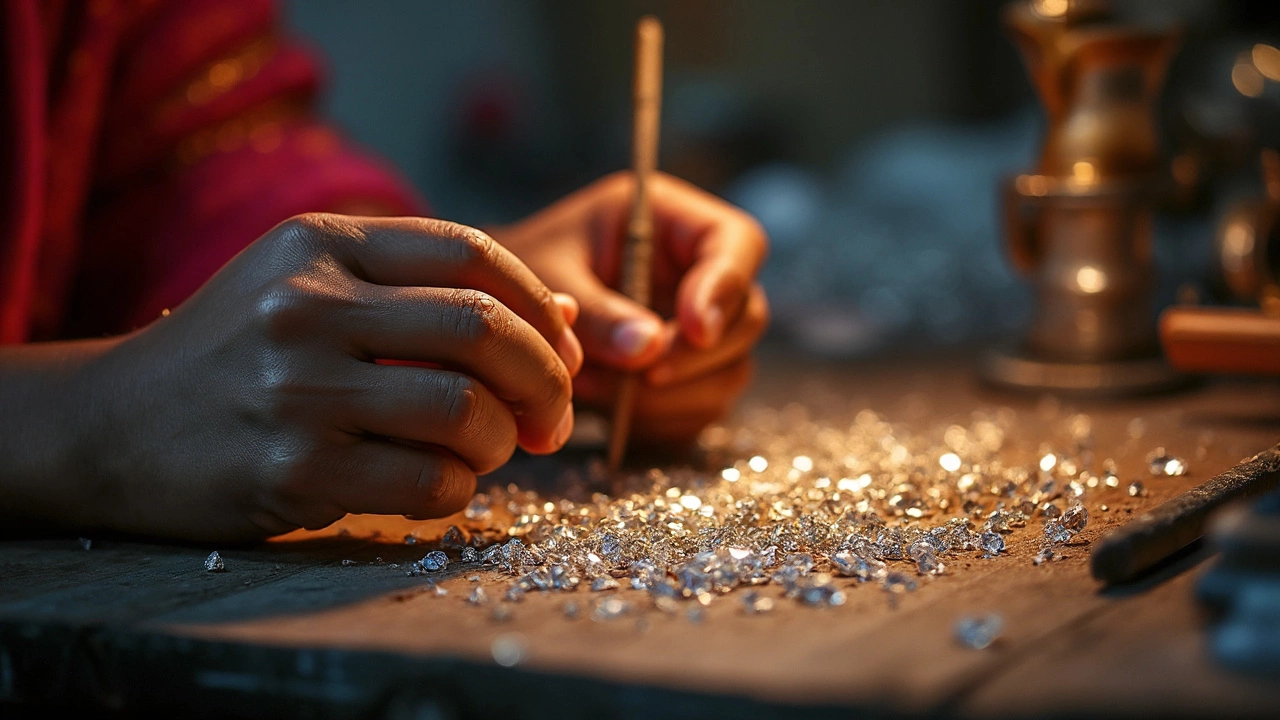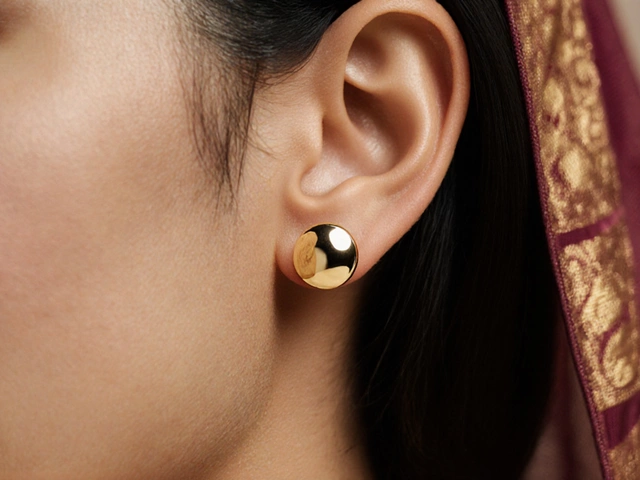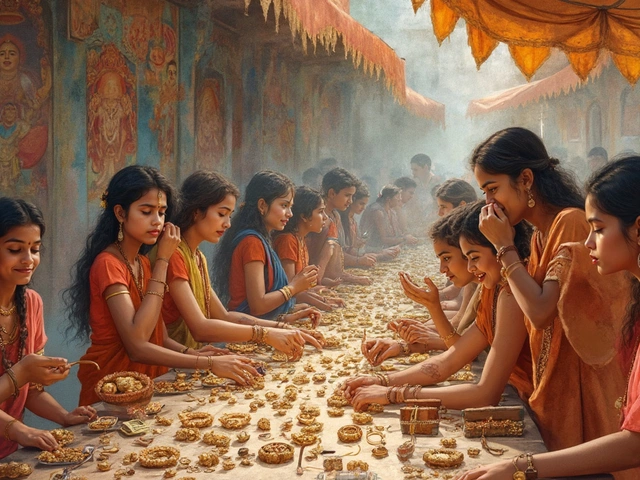Ever wondered why whenever you walk into a jewelry shop in India and admire sparkling diamond rings, there’s a good chance those stones came from Gujarat? It sounds wild, but this one Indian state pretty much rules the diamond world. If you picture diamond mining, maybe your mind jumps to Russia or Africa. But when it comes to diamond cutting and polishing, Gujarat, especially Surat, is where most of the world’s action actually happens.
If you’re thinking about buying a diamond ring or already own one, you’re probably holding a piece of Gujarati handiwork. Over 90% of the world’s diamonds get cut and polished right here before they end up in showrooms from Mumbai to Manhattan. Knowing how and why this started can seriously change how you look at diamonds—and maybe even help you shop smarter.
- How Gujarat Became a Diamond Powerhouse
- The Daily Grind: Life in Surat’s Diamond Factories
- Skills and Secrets: What Sets Gujarati Diamonds Apart
- Impact on Diamond Rings and Jewelry in India
- Smart Tips for Buying Gujarat Diamonds
How Gujarat Became a Diamond Powerhouse
Back in the 1960s, nobody would’ve guessed that a small city in Gujarat called Surat would become the heart of the diamond world. It started simple—merchants from Gujarat were already sharp business minds, trading spices, cloth, and other goods for centuries. One day, they decided to try their hand at diamond polishing. The tech was basic, but the results spoke for themselves.
By the 1970s and 1980s, word got around. People saw that Gujarat could take rough, uncut stones from places like Africa, turn them into beautiful, sparkling diamonds, and do it for a fraction of the cost compared to Europe or Israel. Local businessmen invested in machines and trained locals, especially young people from farming families looking for better money. This kicked off a wave of people leaving their villages, heading to Surat to learn diamond cutting.
What really put Gujarat on the map was volume. Instead of focusing on just big, flashy stones, Surat’s workshops worked on all sizes—the tiniest ones included. By the ‘90s, the city handled nearly 80% of the world’s rough diamonds. Today, that’s climbed to about 90%. Even diamond experts in New York or Antwerp send their larger, valuable stones to Surat because the workers here are fast and don’t mess up easily.
Some reasons why Gujarat became the diamond capital:
- Skilled, low-cost labor: Gujarati workers pick up the cutting and polishing skills fast. Training usually takes just a few months.
- Family businesses: Whole families got involved, keeping knowledge within communities and growing factories from the ground up.
- Smart investment: From machinery to quality controls, Surat jumped on every new tool in the diamond trade.
- Exports and connections: Quick access to Mumbai’s ports made shipping finished diamonds to global buyers pretty easy.
Surat’s story is about hustling, learning on the job, and outsmarting the world’s top diamond centers—not about luck.
The Daily Grind: Life in Surat’s Diamond Factories
Surat doesn’t sleep when it comes to diamonds. Every morning, tens of thousands of skilled workers squeeze into buzzing factories, setting up for another day shaping rough stones into shining gems. It’s not huge machines and robots doing the magic—it's actual people hunched over simple tools, using sharp eyes and steady hands.
Surat is home to more than 5,000 diamond processing units. A regular diamond cutting factory isn’t flashy, but it’s loaded with hustle and focus. Many workers are second- or third-generation in the trade, and some start as apprentices when they're just teenagers. The basic process goes like this: someone takes a rough diamond, then a specialist, called a maker, marks it for optimal cutting. After that, different workers handle cleaving (splitting), bruting (shaping), and finally, polishing until the gem sparkles. Every tiny move matters, because a millimeter off means a big loss in value.
The city handles around Gujarat’s diamonds for the whole world, with some sources saying Surat alone cuts and polishes about 85-90% of all diamonds sold globally. It’s possible because of an insane amount of teamwork and a laser-focused production chain.
| Stat | Number |
|---|---|
| Number of workers in Surat diamond industry | Over 600,000 |
| Annual export value | Almost $24 billion USD |
| Share of world’s polished diamonds | About 90% |
| Number of diamond units | 5,000+ |
Factory shifts are long, usually 8-12 hours. Workers often earn based on how many stones they handle and the quality of their cuts. The diamond units are tightly packed, and the sound of wheels and grinding tools never really stops. But for many families, these jobs mean everything—from securing a child’s education to building a house. The work is tough, no question, but the pride in turning raw stones into brilliant diamonds is undeniable.
Tip: If you ever visit Surat, you won’t see a fancy tourist show—the action is inside small, busy workshops. But that's exactly where most of the world's diamond rings begin their journey to a jewelry display near you.
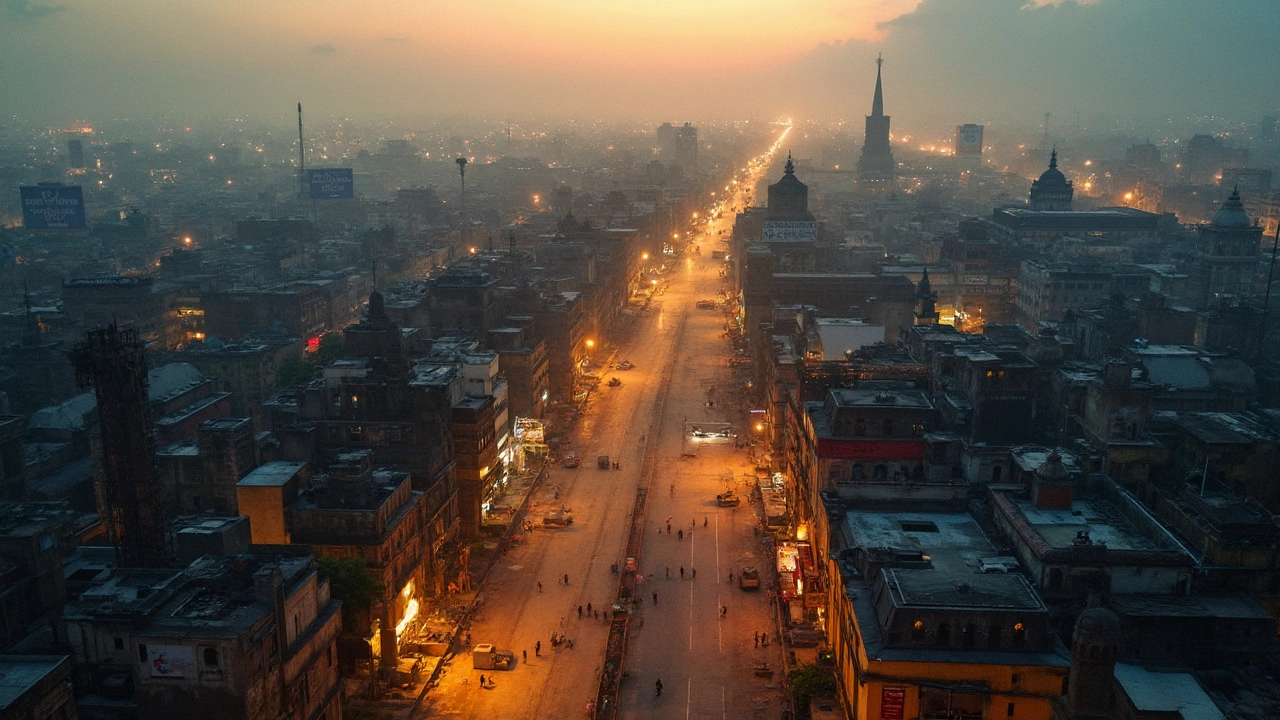
Skills and Secrets: What Sets Gujarati Diamonds Apart
The biggest reason diamonds from Gujarat stand out is the insane level of skill in Surat’s workshops. People here have been cutting and polishing diamonds for decades, and it’s not just handed down from one generation to the next—it’s almost like a citywide obsession. They learn by doing, often starting young, and most cutters perfect their skills for years before handling high-value diamonds.
Surat isn’t using fancy robots for most of the work. Yep, there’s high-tech stuff for certain cuts, but the real difference comes down to hands, eyes, and experience. There’s a strong community of craftsmen who can judge a rough stone and know exactly how to get the maximum sparkle out of it. They can spot inclusions with the naked eye, know how to avoid breaking a stone and make sure it shines at its best.
Here’s what makes Gujarati diamond work top-notch:
- Gujarat is home to small workshops (sometimes called 'katras'), where every stone gets individual attention. Unlike big factories churning out bulk, these small units focus on quality and precision.
- Workers specialize in all kinds of shapes—round, princess, oval, you name it. No other city can match the speed and variety coming out of Surat when it comes to diamond cuts.
- They use unique polishing techniques, like the “table polishing” method, which gets that mirror-like surface. This helps the diamonds get higher grades for brilliance and fire.
- Local experts can stretch the value of even small, lower-quality rough diamonds by cutting them into popular styles used for diamond rings in India and around the globe.
Another often-overlooked detail? Gujarati traders know global trends inside out. If cushion cuts are hot in the US or pear-shaped diamonds are trending in Dubai, they’re on top of it and adapt super fast. So, if you see a new style hitting Indian stores, there’s a good chance Surat’s craftsmen got there weeks earlier. This makes diamond shopping in India exciting, and it’s why the city keeps its edge.
Impact on Diamond Rings and Jewelry in India
The influence of Gujarat’s diamond industry on Indian jewelry is massive. Take any big jewelry shop chain—Malabar Gold, Tanishq, you name it—and peek at their showcases packed with diamond rings. Odds are, their inventory traces back to Surat’s workshops. Because Gujarat dominates diamond cutting and polishing, local jewelry brands get first dibs on a variety of stones, from tiny chips to large showstoppers. That’s why you see so many options at so many price points across India.
A big reason diamond rings are accessible to a wide range of people is this: Gujarat’s factories churn out diamonds in every size and quality, not just the rare, flawless ones you hear about in ads. With advanced laser technology and skilled hands, Surat’s workers make even lower-grade roughs shine. This trickles down to affordable rings for young couples, grand wedding sets, and even lightweight everyday pieces.
Let’s look at some hard numbers to see just how deep Gujarat’s impact goes. Check this table for a snapshot of how the state shapes the diamond scene in India:
| Category | Gujarat's Contribution | Impact on Indian Market |
|---|---|---|
| Diamond Cutting & Polishing | >90% | Almost all diamonds in Indian rings & jewelry pass through Gujarat |
| Employment in Sector | ~1 million people | Supports entire families and local economies |
| Export Share | Over $24 billion (2023 estimate) | Keeps Indian jewelry brands competitive globally |
| Variety of Diamonds | Every shape, size, quality | Accessible pricing, huge choice for customers |
This powerful ecosystem means designers and brands can play around with trends. Whether you’re hunting for a chunky solitaire, a delicate pave band, or a custom design, the variety comes straight from Gujarat’s hustle. And because these diamonds are sourced, cut, and distributed locally, Indian buyers save on extra costs that brands abroad would pass on.
Want a quick tip? If you’re shopping for a diamond ring in India, ask your jeweler about the stone’s journey. More often than not, you’ll find it made its way through Gujarat’s legendary workshops. This local supply chain can mean better service, lower markups, and even options for upgrades later if you feel like switching up your style.
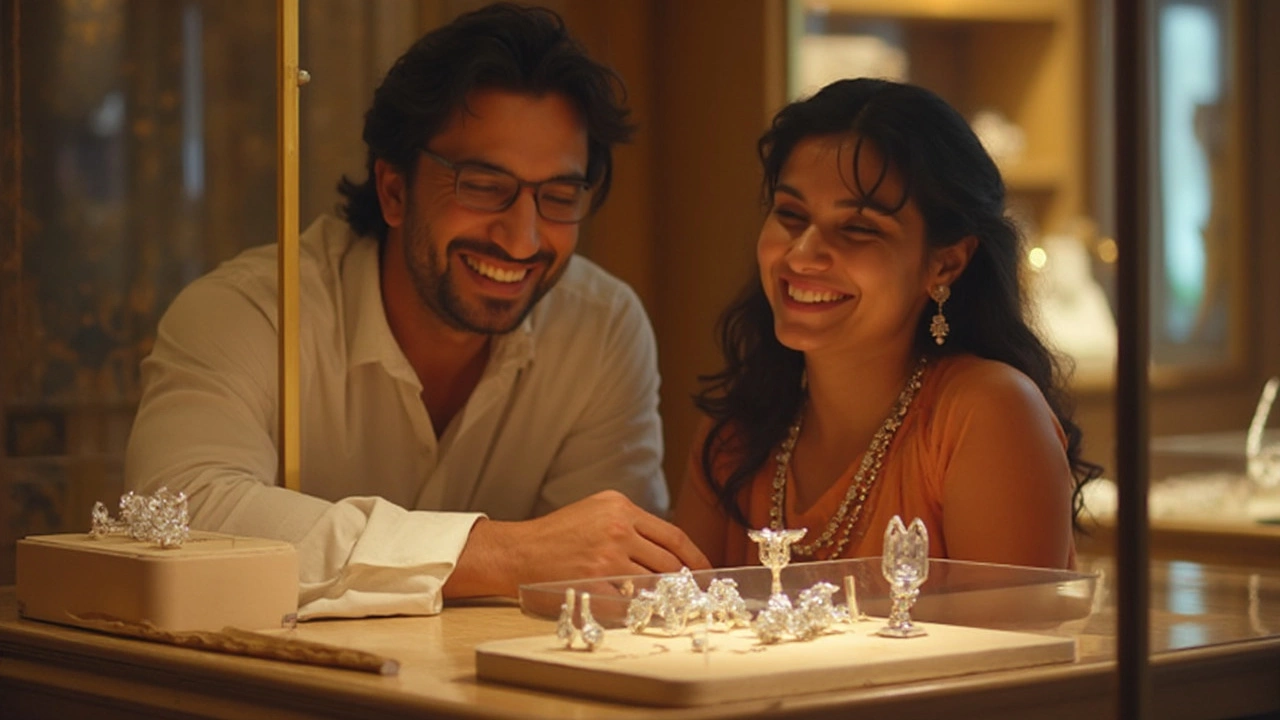
Smart Tips for Buying Gujarat Diamonds
You want the real deal when it comes to diamonds, especially if you’re picking one from Gujarat's workshops. The region is famous for cutting and polishing tiny stones to perfection, but not every diamond is a home run. Here’s how you can keep your eyes open and make sure you get value for money when buying a Gujarat diamond—whether it’s for a ring or any jewelry.
- Always Check Certification: Only buy diamonds that come with a certification. The most commonly trusted ones in India are GIA, IGI, and HRD. Never settle for just a verbal promise.
- Understand the 4Cs: Diamond value boils down to Cut, Color, Clarity, and Carat. Gujarat is strong in cutting, so you’ll usually get a great sparkle, but check that the color and clarity match your expectations. Don’t get caught up only on size.
- Ask Where It Was Cut: The best stones are often cut in Surat thanks to advanced technology and skilled workers. Jewelers will usually have info on this—ask straight up if it’s from Surat.
- Evaluate Return and Buyback Policies: Indian jewelers, especially in big cities, now offer transparent return and exchange options. Ask for details on how easy it is to upgrade if you want to exchange your diamond later.
- Watch Out for Synthetics: India is also a big player in synthetic diamonds. They look great but cost less. If you want a natural diamond, confirm that on the certificate. Your jeweler should be clear about this.
- Bargain, But Know What’s Fair: Since Gujarat deals in high volumes, there’s room to negotiate—especially with local jewelers. Bring along current diamond rate info or use apps to check live prices.
Here’s a quick comparison of what you might come across in a jewelry store:
| Diamond Type | Average Price (per carat in INR, 2025) | Certificate | Common Origin |
|---|---|---|---|
| Natural, Round Cut | ₹2,50,000 | GIA/IGI | Surat |
| Lab-grown | ₹70,000 | IGI | Surat & Mumbai |
| Small Size Melee (<0.20ct) | ₹25,000 | Usually No | Surat |
Numbers show that Surat handles over 90% of small diamonds and most lab-grown stones in India. So don’t be shy about asking for details or comparing offers between stores. When you shop smart, you get a piece of Gujarat’s excellence—without the headache.
